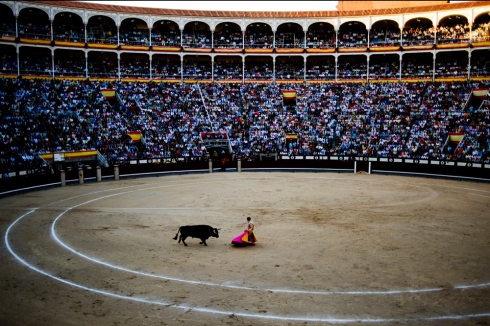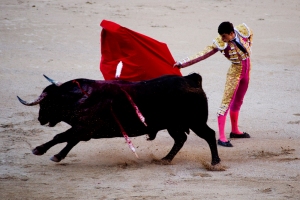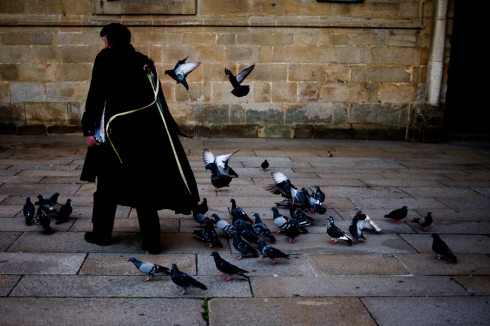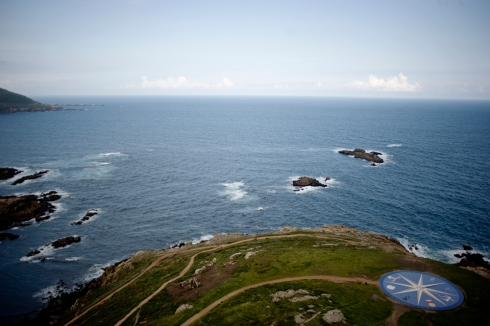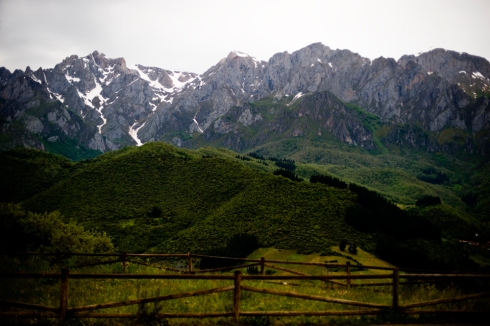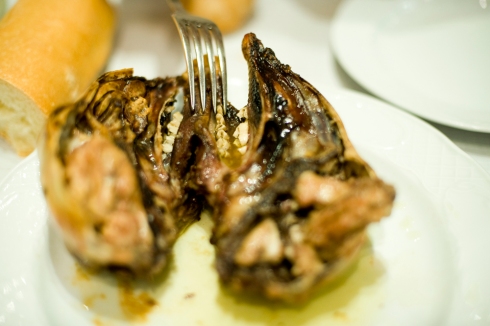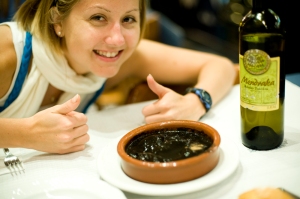We slacked a bit while in Madrid. We were tired and it was a vacation after all. The longest day ever began at 6:30 a.m. Madrid time and ended at 4:30 a.m. Madrid time the next day. 22 hours.
Ending the trip with Madrid was relaxing. There was no car to worry about. We didn’t need a map. The only trouble we encountered was when Bank of America blocked Josh’s debit card, but we had enough to get by for the last two days.
We walked a lot and did Madrid things: went to the Prado and Reina Sofia, ate churros, shopped, ate a picnic lunch in el Parque Retiro. I had done those things before, but for me, the best part about returning to locations previously visited is discovering something new, even if it is very small. At the Reina Sofia, it was a series of photographs by Francesc Catala-Roca.
Last time I left Spain with tons of food and clothing, as if I would never return. This time I bought a few things (and a few bottles of wine), knowing I will go back.
Thanks for reading. I hope we didn’t bore you. I hope we inspired you to make your own itinerary and follow through on it. And if you ever go to Spain, I’d be happy to help in any way.

